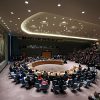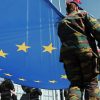The full article can be read on the journal Perspectives on Terrorism, Volume X, Issue 6 (December 2016).
Abstract
A quantitative study of 130 individuals arrested in Spain between June 2013 and August 2016 for terrorist activities related to the Islamic State (IS) shows that the vast majority of them were involved in jihadist activities together with others and not as lone actors. They were typically part of cells, groups or networks (CGN) of varied size and composition. These CGN were more often new, transnational and IS-linked than regenerated, national and only IS-inspired. Detainees who participated in CGN occupied various positions in the centre (or first-tier), in the intermediate circle (or second-tier), and the periphery, depending on their social characteristics and functions. Nearly all of them belonged to jihadist aggregates engaging in radicalisation and recruitment efforts, usually dispatching foreign fighters, raising money and distributing propaganda on behalf of IS. In addition, the majority of these individuals had either travelled to Syria and Iraq, had tried (but failed) to travel, or had the intention of doing so. About one third of the 130 individuals belonged to CGN with operational capabilities and manifested willingness to carry out attacks inside Spain. Our research on the Spanish situation shows that the threat posed by IS is highly networked and organized.
Introduction
Spain has not been exempt from the unprecedented jihadist mobilization worldwide prompted by the Islamic State (IS) organization, though Spain is not among the Western European countries most affected, neither in absolute terms nor relative to the size of its population.1 Between June 2013, when the first anti-IS (then still anti-ISIL) counterterrorism operation was launched inside Spain, and August 2016, the total number of detainees for IS-related terrorist activities was 130. Until the Summer of 2016, some 190 departed from Spain to join the ranks of IS in both Syria and Iraq as foreign fighters. Six of the latter were arrested upon return–though the actual number of returnees can be estimated as being up to five times larger–and are included in the figure of detainees.
To explore patterns of involvement at the individual level of analysis, we have gathered information and built a database on 130 detainees, in the Elcano Database on Jihadists in Spain (EDBJS). Our sources were the Interior Ministry’s press releases, police reports and publicly accessible court documents at the Audiencia Nacional (National Court) in Madrid, the only jurisdiction in Spain dealing with terrorism offences. Our database has also benefitted from interviews with law enforcement experts and information gathered from systematic searches of media sources indexed in Factiva.2 The body of information assembled was thus treated both quantitatively and qualitatively.3
Most individuals arrested in Spain for IS-related terrorist activities are men (83.8%) aged between 20 and 44 at the time of detention (80.3%), more often than not–56.7%–they were married. 43% are nationals of Spain and 41.4% are Moroccan nationals. Five out of every ten are immigrants and four out of ten are second generation descendants of (mainly) Moroccan immigrants. Some 13.3% are converts. Six out of ten were enrolled in secondary education, twice the number of those who only attended primary school. Three times as many as those detainees with only working class jobs, have been in middle class or lower middle class jobs. 16.7% had no known occupation at the time of detention, and one third had a previous criminal record as ordinary delinquents.
In Spain, just like elsewhere, different patterns of becoming involved in IS-related activities can be observed; this affects the range of expressions a terrorist threat may eventually adopt. In this sense, becoming involved as an individual acting alone is not the same as becoming involved with others as part of cells, groups and networks (CGN).4 In this article we will explore how exactly the 130 individuals arrested in Spain for IS-related terrorist offences became involved. We also look at the position they occupied inside the CGN most of them belonged to. We will explore the nature, size, composition, scope and functions of the CGN these detainees joined. Finally, we will also look how many of them were willing to become foreign fighters or to carry out attacks in Spain, the two options being not mutually exclusive. […]
Read more on the Perspectives on Terrorism website
Carola García-Calvo
Researcher in the Program on Global Terrorism at Elcano Royal Institute | @carolagc13
Fernando Reinares
Senior Analyst on International Terrorism at Elcano Royal Institute and Global Fellow at the Wilson Center | @F_Reinares
1 See, on this issue, Fernando Reinares, “How to Counter Jihadist Appeal among Western European Muslims”, Washington, DC: Woodrow Wilson Center, Wilson Brief, December 2015.
2 Factiva, a Dow Jones product, is a database drawing upon approximately 25,000 sources of information emanating from more than 200 countries in 28 languages.
3 Here we wish to acknowledge the outstanding help on both data collection and database maintenance provided by Álvaro Vicente, Research Assistant of the Program on Global Terrorism at Elcano Royal Institute.
4 It is not always easy to distinguish between cells, groups and networks. As we understand it for the purpose of this article, cells are smaller and tend to exhibit a greater degree of internal hierarchy and cohesiveness. Groups tend to be larger but have more blurred contours and are usually also a less formalized. Networks are more complex and overlapping aggregates, where individuals may also belong to other cells or groups.
This work is licensed under a Creative Commons Attribution 3.0 License.




